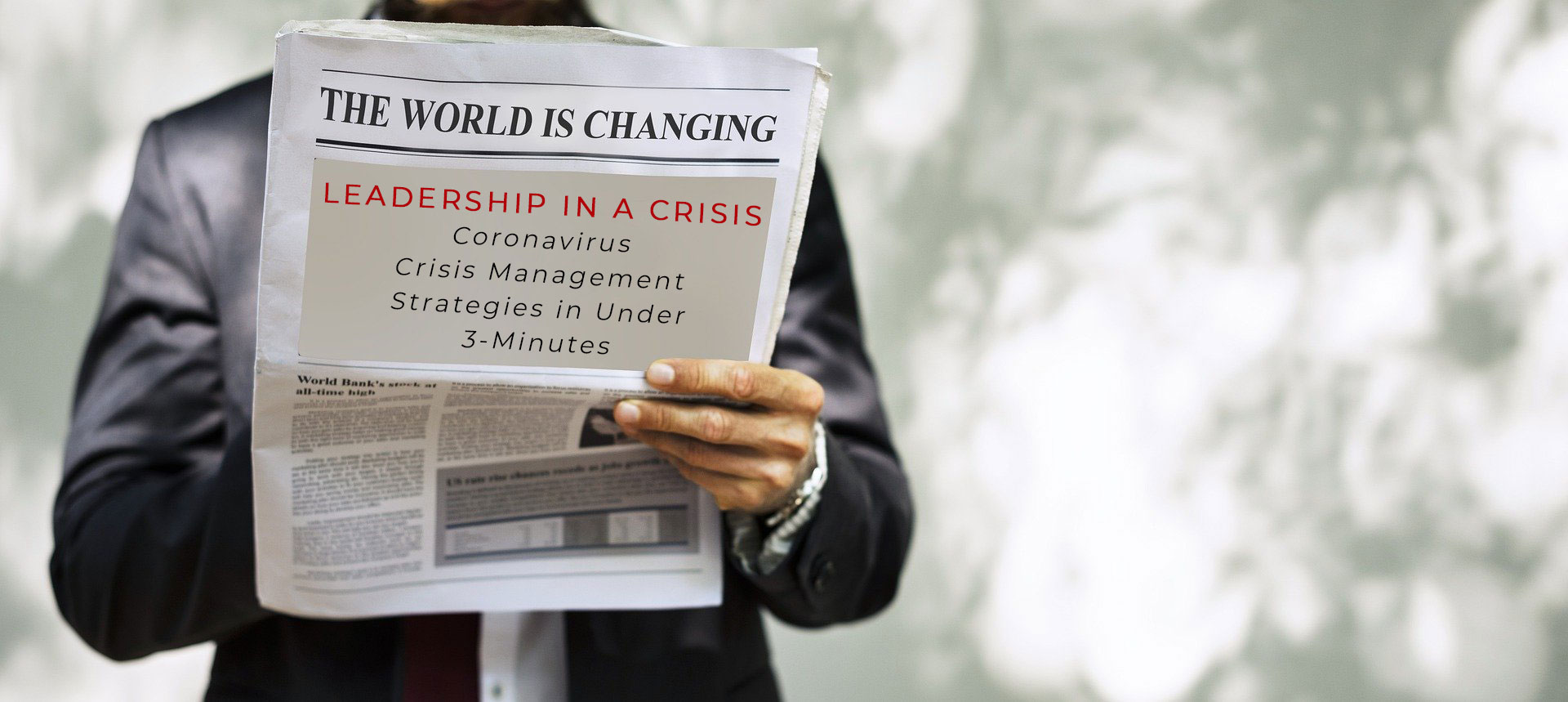Is there anything to be said about the past year of dealing with COVID-19 that hasn’t been said already?
I believe, yes, there is. The year 2020-21 has been the year of momentous change where every individual, irrespective of race, faith, gender, socioeconomic class, and organizations across sectors had to pivot.
The world witnessed unprecedented changes and our collective ability to adapt to challenging times and channel our leadership abilities on an individual and community level.
As a leadership coach and mentor, it was hard to miss the resilience of individuals and organizations, the power of teams and that of our leaders in hard times.
How did professional development and effective leadership training adapt to the ‘new normal’?
The first few weeks were unsettling because of the lack of knowledge about COVID-19 and preventative measures. We at CCI chose to work from home for what I originally thought would be a few weeks. I quickly realized this would be a lot longer hiatus and reached out to each of our clients to let them know we were still there for them. Like many within our industry, we had to pivot to a completely virtual setting to deliver all our programs and services.
Prior to 2020, I spent many hours at airports and lounges while traveling worldwide to support our clients. I would spend time in North and South America, Europe, the Middle East, and many places around the world to deliver training and private coach some of our elite senior level clients.
Now, both our clients and I have benefited from virtual sessions, which make better use of our time, financial resources, and the reduction in travel for non-essential reasons, has also helped the environment.
My leadership takeaway for the year has been to review our strategy and processes to be more efficient constantly.
I didn’t expect us to be equally successful at training or facilitating online, especially when dealing with topics such as body language and presentation skills.
However, through effective leadership training and interactive communication, we could easily replicate results in our virtual sessions, as indicated from our client’s feedback. Our success with our virtual sessions demonstrated how many non-essential processes we hang on to out of habit.
As human beings, we need connection. Connecting might be challenging for some when the recipient may choose not to have their camera on, limiting the visual cues available to the speaker. But I have learned that when the speaker chooses to be open, warm and authentic, listeners and team members do engage with the speaker through different means.
With that in mind, here are some of my takeaways on how organizations have adapted to the ‘new normal’ and are developing leaders who are thoughtful, inclusive and authentic:
We are human beings who value and need connections
Our evolving leaders need to rethink how to build connections and ensure the well-being of individuals within their teams given the complexities of a virtual workplace
In the first few months of the pandemic, we saw a surge in organizations doing happy hours and free pizzas for employees to maintain team morale. At first it was different, but then ‘Zoom fatigue’ sunk in and the novelty of these types of activities wore off, as the pandemic extended beyond a year, with several lockdowns and restrictions, impacting individual circumstances and at times, mental health.
- Do virtual social activities really help employees feel better equipped to handle their circumstances?
- Did it empower them with the tools to demonstrate their skills online?
These are questions each team leader/organization must ask themselves before determining the right method to provide value to their employees.
For example, one of our biggest successes over the past year has been our How to Fascinate Workshop because it’s entertaining, informative and helps team members understand themselves and each other better.
The workshop allows teams to bond, gain greater insights as to why people behave the way they do and how to ensure everyone can work together more effectively. It really is fascinating.
There are opportunities everywhere
The only way to really achieve success is to make your people your highest priority.
I delved into the increased resource efficiency with reduced traveling at the start of this blog, but I need to make a special mention of how much that has helped individuals. I noticed many of my clients benefiting from the reduced travel. They have more time for their families and themselves, and it’s less tiresome.
Many clients have told me they have been able to use the time to focus on their personal goals and health, while still being as productive as before.
Organizations and leaders must reconsider their work culture policies about working from home and traveling for work, as well as ensuring that employees are creating work-life boundaries that allow them to thrive.
Private coaching for your teams is a great way to invest in their personal development
In the first few months of the pandemic, we saw an increased interest from organizations about providing private coaching for their teams to help them deliver their presentations, sales pitches, and lead their teams virtually.
The demand for it led us to create our Leadership Presence: Online Training Program. Such programs empower leaders with the skills, confidence, and knowledge they need about human behaviour to inspire confidence and foster trust among a diverse team of employees.
Now, what can individuals do, you ask?
Here are my lessons for you on how to become an effective leader

Take the time to reflect!
This is my biggest advice for you.
Although traveling to work every day may have been stressful for some of you, the everyday commute provided us with an opportunity to reflect on our lives, listen to our favorite podcast and give our brain a break from our work. This time is essential. The only way to adapt and embrace change properly involves a lot of reflection and introspection.
Please take the time out in a day to reflect, and it can be as short as 10 minutes. This time will allow you to be more creative and approach your challenges from a different perspective. Maybe you do this by going for a walk or getting up a bit earlier than everyone in your household to have me time.
Yesterday’s leader is not tomorrow’s leader
Adapt to changing times.
The last year has demonstrated how leaders who lead with empathy perform better. New Zealand’s Prime Minister, Jacinda Arden, is a perfect example. Not only is New Zealand one of the most successful countries in the fight against COVID-19, but it is also a source of inspiration to many because of its use of empathy to inspire.
Our ideas of effective leadership have changed, and leaders today are expected to be personable, empathetic and inclusive. Authoritarian leadership has not performed well across the world.
Invest in yourself
This advice on how to become an effective leader is tied to the previous two points. With increased flexibility and the rapid changes in leadership expectations, it is vital that you invest in yourself.
Be it choosing a program to develop your leadership and presentation skills, your emotional intelligence, understanding how your brain works to improve your performance, or understanding how to lead diverse teams virtually.
I recommend taking the time to reflect and identify your strengths, weaknesses, and identify opportunities for professional development.
You need to up-skill to be the leader of tomorrow. And, there’s no better time than now.
More power to you!






